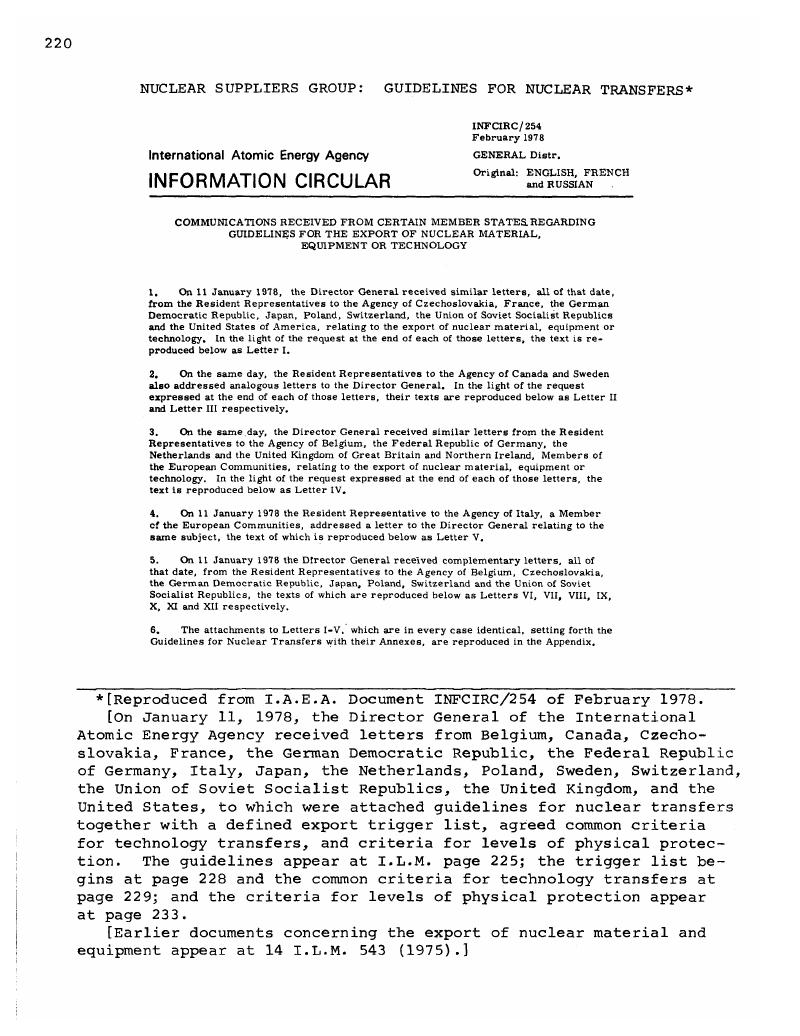No CrossRef data available.
Article contents
Nuclear Suppliers Group: Guidelines for Nuclear Transfers
Published online by Cambridge University Press: 26 May 2017
Abstract

- Type
- Other Documents
- Information
- Copyright
- Copyright © American Society of International Law 1978
References
* [Reproduced from I.A.E.A. Document INFCIRC/254 of February 1978.
[On January 11, 1978, the Director General of the International Atomic Energy Agency received letters from Belgium, Canada, Czechoslovakia, France, the German Democratic Republic, the Federal Republic of Germany, Italy, Japan, the Netherlands, Poland, Sweden, Switzerland, the Union of Soviet Socialist Republics, the United Kingdom, and the United States, to which were attached guidelines for nuclear transfers together with a defined export trigger list, agreed common criteria for technology transfers, and criteria for levels of physical protection. The guidelines appear at I.L.M. page 225; the trigger list begins at page 228 and the common criteria for technology transfers at page 229; and the criteria for levels of physical protection appear at page 233.
[Earlier documents concerning the export of nuclear material and equipment appear at 14 I.L.M. 543 (1975).]
* [For clarifications of items on the trigger list see I.L.M. page 231..
a As identified in the Trigger List.
b Material not irradiated in a reactor or material irradiated in a reactor but with a radiation level equal to or less than 100 rads/hour at one metre unshielded.
c Less than a radiologically significant quantity should be exempted.
d Natural uranium, depleted uranium and thorium and quantities of uranium enriched to less than 10% not falling in Category III should be protected in accordance with prudent management practice.
e Although this level of protection is recommended, it would be open to States, upon evaluation of the specific circumstances, to assign a different category of physical protection.
f Other fuel which by virtue of its original fissile material content is classified as Category I or II before irradiation may be reduced one category level while the radiation level from the fuel exceeds 100 rads/hour at one metre unshielded.




